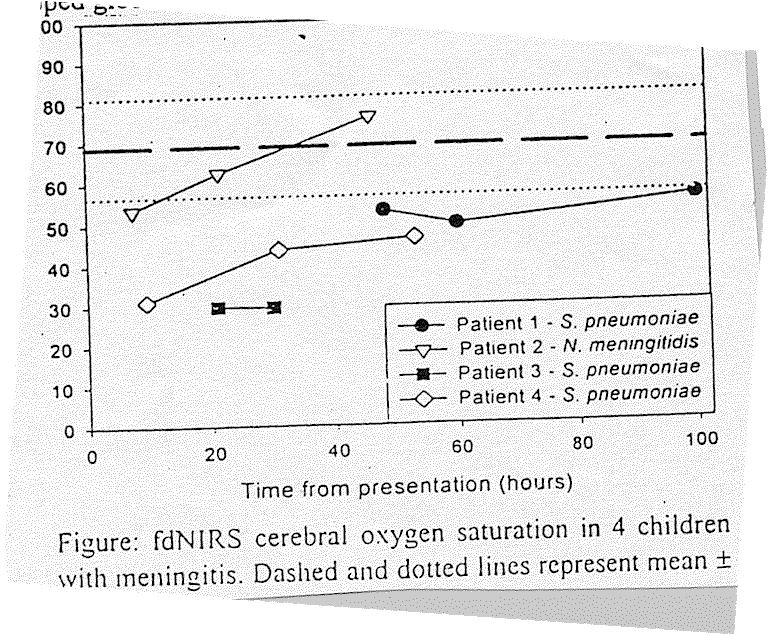
| 11 th Annual Pediatric Critical Care Colloquium |
| Session/Time | Neurology/Fri, 10:00 - 12:00 PM |
| Title | Cerebral Oxygen Saturation in Children with Meningitis |
| Author | HM Watzrnan, AT Costarino, M Priestley, M O'Rourke, MC Harris, CD Kurth |
| Affiliation | Department of Anesthesia and Pediatrics, The Children's Hospital of Philadelphia, University of Pennsylvania, Philadelphia, PA |
| Introduction | Meningitis results in neurologic morbidity in 3-12% of infected children. Decreased cerebral blood flow, secondary to vascular thrombosis or increased intracranial pressure contributes to decreased cerebral oxygen content and subsequent ischemia. Near infrared spectroscopy (NIRS) is a non-invasive method to monitor cerebral 02 saturation within gas-exchanging vessels (capillaries, venules, arterioles). This study used frequency-domain NIRS (fdNIRS) to measure cerebral 02 saturation (SC02) in children with meningitis. |
| Method | We enrolled patients admitted to the PICU who were less than 8 years old and had meningitis based upon positive culture, gram stain, elevated 'VFBC, or abnormal protein or (,Iucose levels in cerebrospinal fluid. SCO2 was measured from the left and right forehead upon admission and at subsequent 12- hour intervals. Head CT and/or MRI was obtained on all patients within 3 days from presentation. |
| Result | We studied 4 children (6 to 27 months) with bacterial meningitis. ScO2 ranged from 23% - 82%. The only mortality occurred in patient 'i (SC02=23%) who developed global cerebral infarction; death occurred in this patient 3 within hours after this measurement was obtained. Patient I (ScO2=50%) developed seizures and bilateral frontal infarction 48 hours after presentation. Patients 2 and 4 had normal brain radiological findings. |
| Conclusion | In healthy children, SCO2 is 69±12%. We observed decreased ScO2 in children with meningitis, consistent with an ischemic mechanism of injury. Based on animal studies, a ScO2 < 30% results in cerebral ischemia and infarction. Interestingly, one patient had a ScO2 below this critical value and developed global infarction. <30% results in cerebral ischemia and infarction. Interestingly, one patient had a ScO2 below this critical value and developed global infarction. |

Use your browser's back button to return to the appropriate index of abstracts...
Back to PCCC 98 Abstract Introduction | Back to PCCC 1998